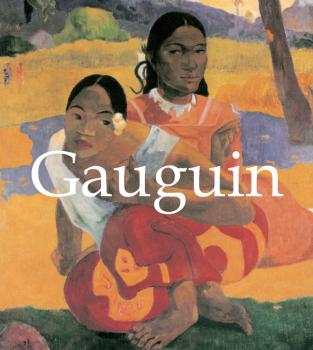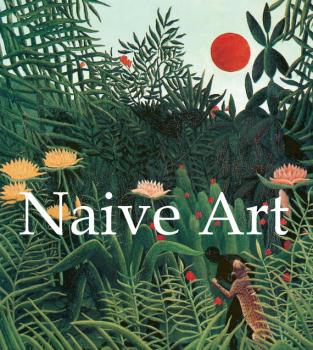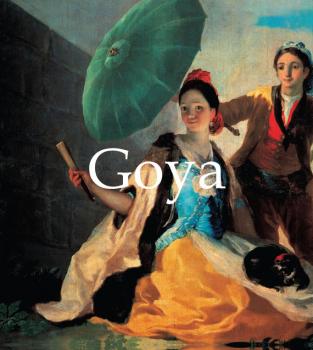Parkstone International Publishing
Все книги издательства Parkstone International PublishingGauguin
Paul Gauguin was first a sailor, then a successful stockbroker in Paris. In 1874 he began to paint at weekends as a Sunday painter. Nine years later, after a stock-market crash, he felt confident of his ability to earn a living for his family by painting and he resigned his position and took up the painter’s brush full time. Following the lead of Cézanne, Gauguin painted still-lifes from the very beginning of his artistic career. He even owned a still-life by Cézanne, which is shown in Gauguin’s painting Portrait of Marie Lagadu. The year 1891 was crucial for Gauguin. In that year he left France for Tahiti, where he stayed till 1893. This stay in Tahiti determined his future life and career, for in 1895, after a sojourn in France, he returned there for good. In Tahiti, Gauguin discovered primitive art, with its flat forms and violent colours, belonging to an untamed nature. With absolute sincerity, he transferred them onto his canvas. His paintings from then on reflected this style: a radical simplification of drawing; brilliant, pure, bright colours; an ornamental type composition; and a deliberate flatness of planes. Gauguin termed this style “synthetic symbolism”.
Dalí
Painter, designer, creator of bizarre objects, author and film maker, Dalí became the most famous of the Surrealists. Buñuel, Lorca, Picasso and Breton all had a great influence on his career. Dalí's film, An Andalusian Dog, produced with Buñuel, marked his official entry into the tightly-knit group of Parisian Surrealists, where he met Gala, the woman who became his lifelong companion and his source of inspiration. But his relationship soon deteriorated until his final rift with André Breton in 1939. Nevertheless Dalí's art remained surrealist in its philosophy and expression and a prime example of his freshness, humour and exploration of the subconscious mind. Throughout his life, Dalí was a genius at self-promotion, creating and maintaining his reputation as a mythical figure.
Art of the 20th Century
The 20 th century was a revolutionary period in art history. In the span of a few short years, Modernism exploded into being, disrupting centuries of classical figurative tradition to create something entirely new. This astoundingly thorough survey of art's modern era showcases all of the key artistic movements of the 20 th century, from Fauvism to Pop Art, featuring illustrative examples of some of the most renowned works of the era along with illuminating companion essays by expert critics and art historians. A vivid window into the collective psyche of the modern world's great artists, Art of the 20 th Century is a must-have for any fan of contemporary art.
Lighthouses
The lighthouse, an indefatigable watchman, ceaselessly guides boats to their ports.This beacon of maritime signalisation has guided sailors since antiquity.The first known lighthouse appeared on the island of Pharos, and was the remarkable Lighthouse of Alexandria; however, it seems that volcanoes like Stromboli and its frequent eruptions were possibly at the origin of this invention, as the fires guided boats to their shores. Faced with the increasing development of modern navigational aids, these lone sentinels do not hold the same functional importance today. However, this work emphasises not only their role as a major architectural development, but also the place that they hold in the cultural heritage of the world. From the Lighthouse of the Whales (France) to the Lighthouse at the End of the World (Tierra del Fuego,Argentina), and passing by the Lighthouse of Green Island (Canada) and the Bell Rock Lighthouse (Scotland), this work invites the reader to rediscover the richness of these witnesses of other times.
Little Boys
Ever since the ancient Greeks sculpted the first kouros, children have been a source of inspiration for some of the world's greatest artists. Whether portraits of their own children, friends, and family members, or a nostalgic psychological portrayal of the artist's own youth, depictions of children in art remain arresting examples of an intersection between the picturesque innocence of childhood and the methodical work of adult artistry. In this delightful new puzzle book, children get a chance to see little boys and girls just like them as portrayed by great artists, learning about how children grew up throughout history while experiencing a genuine connection with works of artistic genius.
Little Girls
Ever since the ancient Greeks sculpted the first kouros, children have been a source of inspiration for some of the world's greatest artists. Whether portraits of their own children, friends, and family members, or a nostalgic psychological portrayal of the artist's own youth, depictions of children in art remain arresting examples of an intersection between the picturesque innocence of childhood and the methodical work of adult artistry. In this delightful new puzzle book, children get a chance to see little boys and girls just like them as portrayed by great artists, learning about how children grew up throughout history while experiencing a genuine connection with works of artistic genius.
Naive Art
Until the end of the 19th century Naïve Art, created by untrained artists and characterised by spontaneity and simplicity, enjoyed little recognition from professional artists and art critics. Naïve painting is often distinguished by its clarity of line, vivacity and joyful colours, as well as by its rather clean-cut, simple shapes, as represented by French artists such as Henri Rousseau, Séraphine de Senlis, André Bauchant and Camille Bombois. However, this movement has also found adherents elsewhere, including Joan Miró (who was influenced by some of its qualities), Guido Vedovato, Niko Pirosmani, and Ivan Generalic.
Lempicka
The smoothly metallic portraits, nudes and still lifes of Tamara de Lempicka encapsulate the spirit of Art Deco and the Jazz Age, and reflect the elegant and hedonistic life-style of a wealthy, glamorous and privileged elite in Paris between the two World Wars. Combining a formidable classical technique with elements borrowed from Cubism, Lempicka’s art represented the ultimate in fashionable modernity while looking back for inspiration to such master portraitists as Ingres and Bronzino. This book celebrates the sleek and streamlined beauty of her best work in the 1920s and 30s. It traces the extraordinary life story of this talented and glamorous woman from turn of the century Poland and Tsarist Russia, through to her glorious years in Paris and the long years of decline and neglect in America, until her triumphant rediscovery in the 1970s when her portraits gained iconic status and world-wide popularity.
Kirchner
The self-appointed “leader” of the artists’ group Die Brücke (Bridge), founded in Dresden in 1905, Ernst Ludwig Kirchner was a key figure in the early development of German Expressionism. His first works show the influence of Impressionism, Post-impressionism and Jugendstil, but by about 1909, Kirchner was painting in a distinctive, expressive manner with bold, loose brushwork, vibrant and non-naturalistic colours and heightened gestures. He worked in the studio from sketches made very rapidly from life, often from moving figures, from scenes of life out in the city or from the Die Brücke group’s trips to the countryside. A little later he began making roughly-hewn sculptures from single blocks of wood. Around the time of his move to Berlin, in 1912, Kirchner’s style in both painting and his prolific graphic works became more angular, characterized by jagged lines, slender, attenuated forms and often, a greater sense of nervousness. These features can be seen to most powerful effect in his Berlin street scenes. With the outbreak of the First World War, Kirchner became physically weak and prone to anxiety. Conscripted, he was deeply traumatised by his brief experience of military training during the First World War. From 1917 until his death by suicide in 1938, he lived a reclusive, though artistically productive life in the tranquillity of the Swiss Alps, near Davos.
Goya
Goya is perhaps the most approachable of painters. His art, like his life, is an open book. He concealed nothing from his contemporaries, and offered his art to them with the same frankness. The entrance to his world is not barricaded with technical difficulties. He proved that if a man has the capacity to live and multiply his experiences, to fight and work, he can produce great art without classical decorum and traditional respectability. He was born in 1746, in Fuendetodos, a small mountain village of a hundred inhabitants. As a child he worked in the fields with his two brothers and his sister until his talent for drawing put an end to his misery. At fourteen, supported by a wealthy patron, he went to Saragossa to study with a court painter and later, when he was nineteen, on to Madrid. Up to his thirty-seventh year, if we leave out of account the tapestry cartoons of unheralded decorative quality and five small pictures, Goya painted nothing of any significance, but once in control of his refractory powers, he produced masterpieces with the speed of Rubens. His court appointment was followed by a decade of incessant activity – years of painting and scandal, with intervals of bad health. Goya’s etchings demonstrate a draughtsmanship of the first rank. In paint, like Velázquez, he is more or less dependent on the model, but not in the detached fashion of the expert in still-life. If a woman was ugly, he made her a despicable horror; if she was alluring, he dramatised her charm. He preferred to finish his portraits at one sitting and was a tyrant with his models. Like Velázquez, he concentrated on faces, but he drew his heads cunningly, and constructed them out of tones of transparent greys. Monstrous forms inhabit his black-and-white world: these are his most profoundly deliberated productions. His fantastic figures, as he called them, fill us with a sense of ignoble joy, aggravate our devilish instincts and delight us with the uncharitable ecstasies of destruction. His genius attained its highest point in his etchings on the horrors of war. When placed beside the work of Goya, other pictures of war pale into sentimental studies of cruelty. He avoided the scattered action of the battlefield, and confined himself to isolated scenes of butchery. Nowhere else did he display such mastery of form and movement, such dramatic gestures and appalling effects of light and darkness. In all directions Goya renewed and innovated.









